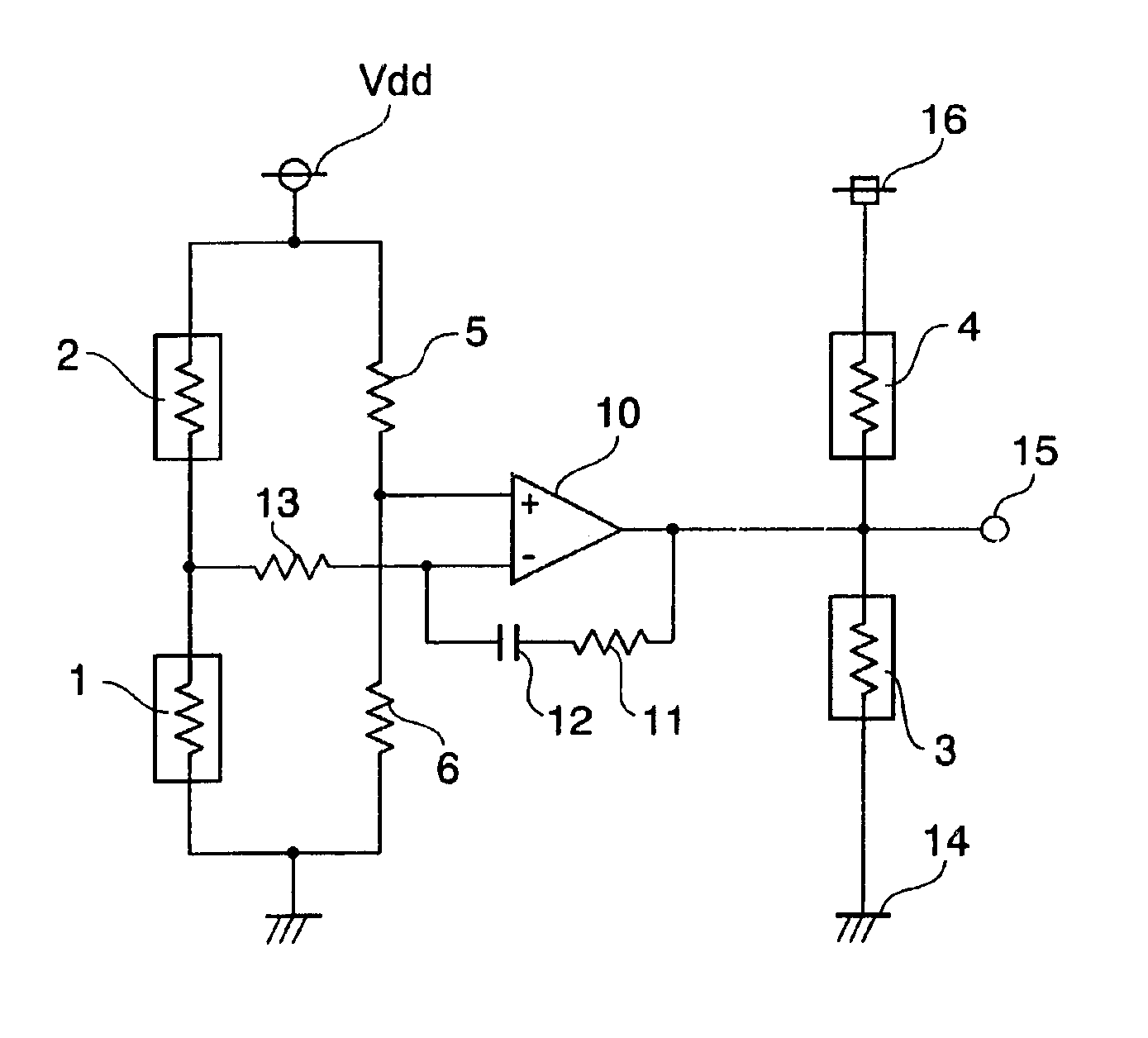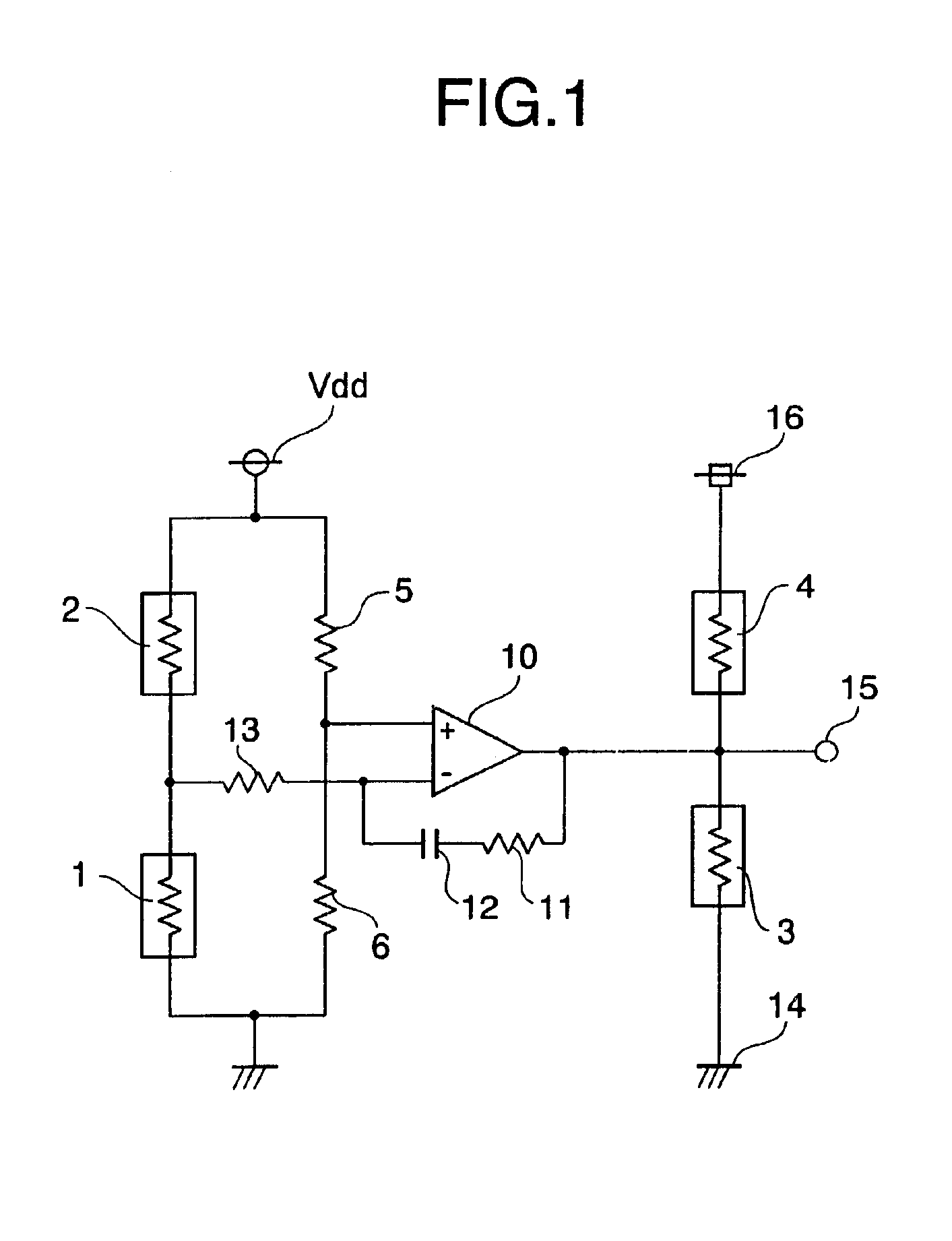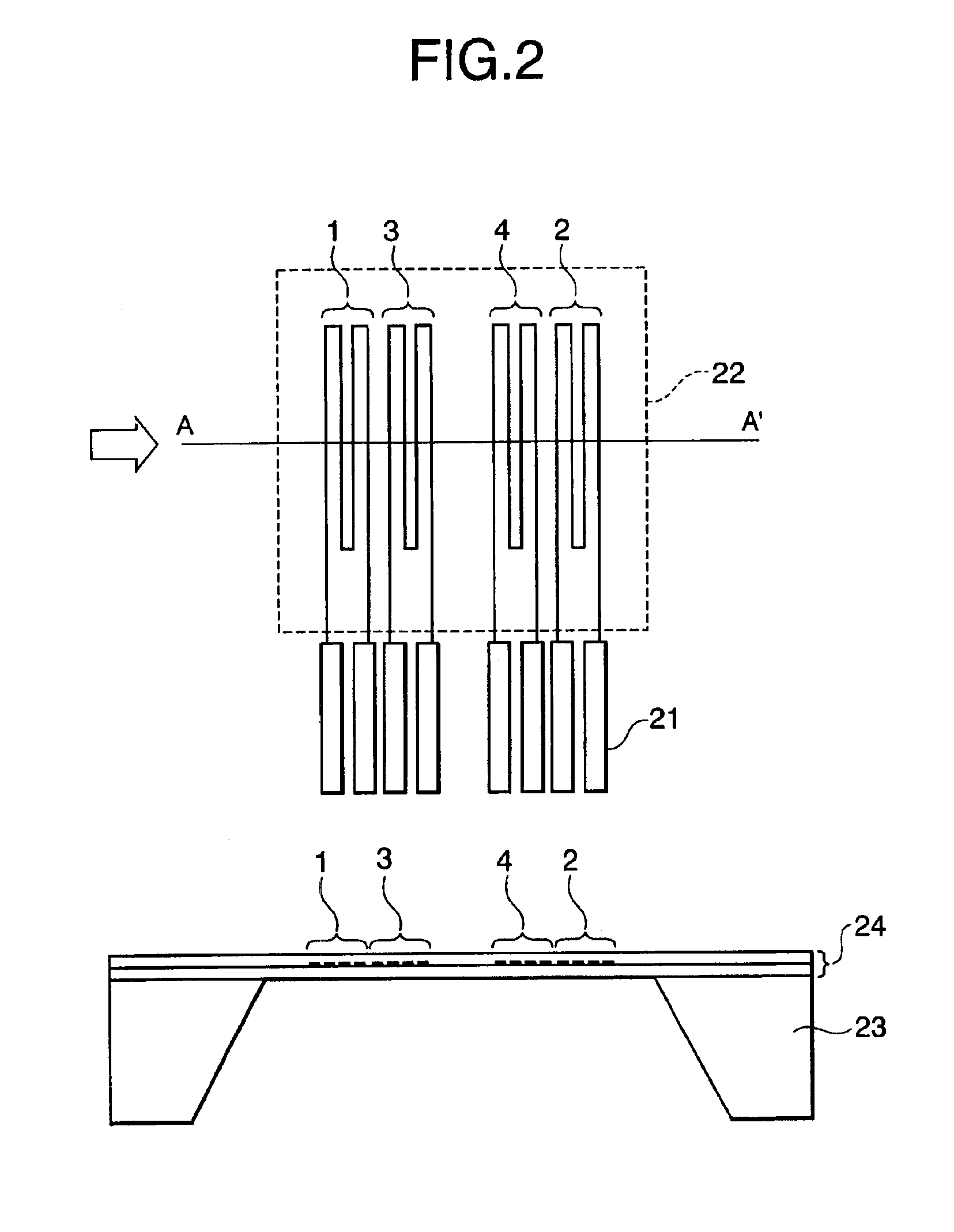Thermal type flow rate detector
a flow rate detector and flow rate technology, applied in the direction of measuring devices, electrical control, instruments, etc., can solve the problems of difficult miniaturization of circuits, unnecessary temperature adjustment of heat generating elements, and problems such as detection accuracy becomes a problem, and achieve excellent sn ratio
- Summary
- Abstract
- Description
- Claims
- Application Information
AI Technical Summary
Benefits of technology
Problems solved by technology
Method used
Image
Examples
first embodiment
[0035]A thermal type flow rate detector according to a first embodiment of the present invention will hereinbelow be described with reference to FIGS. 1 to 3. FIG. 1 is a circuit diagram showing a configuration of a thermal type flow rate detector according to a first embodiment of the present invention. Note that, in the figures, the same reference numerals denote the same or corresponding constituent elements.
[0036]In FIG. 1, reference numeral 1 denotes an upstream side temperature detecting element; reference numeral 2 denotes a downstream side temperature detecting element; reference numeral 3 denotes an upstream side heat generating element; reference numeral 4 denotes a downstream side heat generating element; reference numeral 5 denotes a fixed resistor; reference numeral 6 denotes a fixed resistor; reference numeral 10 denotes a differential amplifier; reference numeral 11, a fixed resistor; reference numeral 12, a capacitor; reference numeral 13, a fixed resistor; reference...
second embodiment
[0059]A thermal type flow rate detector according to a second embodiment of the present invention will hereinbelow be described with reference to FIGS. 5 and 6. FIG. 5 is a circuit diagram showing a configuration of a thermal type flow rate detector according to a second embodiment of the present invention.
[0060]In FIG. 5, both the circuit and the flow rate detecting elements are the same as those of the above-mentioned first embodiment shown in FIG. 1 except for a fixed resistor 7. The fixed resistor 7 is connected in series with the downstream side heat generating element 4 and between the downstream side heat generating element 4 and the first constant voltage power supply 16 or the output terminal 15.
[0061]Next, the description will hereinbelow be given with respect to the operation of the thermal type flow rate detector according to the second embodiment with reference to FIGS. 5 and 6.
[0062]In the case where temperature drift does not become a problem against the change in flu...
third embodiment
[0069]A thermal type flow rate detector according to a third embodiment of the present invention will hereinbelow be described with reference to FIG. 7. FIG. 7 is a circuit diagram showing a configuration of a thermal type flow rate detector according to a third embodiment of the present invention.
[0070]In FIG. 7, the circuit configuration is the same as that of the above-mentioned first embodiment shown in FIG. 1 except for a fixed resistor 8, and is given a temperature compensation method different from that of the above-mentioned second embodiment.
[0071]In this embodiment, the fixed resistor B is connected in parallel with the temperature detecting element 1, whereby in order to compensate for the outward reduction of the temperature coefficient of the upstream side temperature detecting element 1, the upstream side temperature detecting element 1 is operated so as to be largely changed for the fluid temperature than the downstream side temperature detecting element 2.
[0072]For e...
PUM
 Login to View More
Login to View More Abstract
Description
Claims
Application Information
 Login to View More
Login to View More - R&D
- Intellectual Property
- Life Sciences
- Materials
- Tech Scout
- Unparalleled Data Quality
- Higher Quality Content
- 60% Fewer Hallucinations
Browse by: Latest US Patents, China's latest patents, Technical Efficacy Thesaurus, Application Domain, Technology Topic, Popular Technical Reports.
© 2025 PatSnap. All rights reserved.Legal|Privacy policy|Modern Slavery Act Transparency Statement|Sitemap|About US| Contact US: help@patsnap.com



